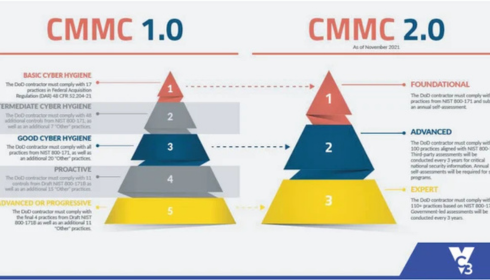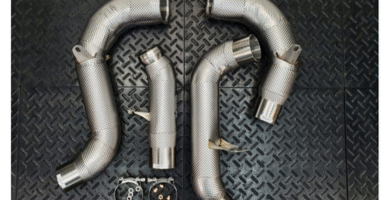How Smaller Firms Demonstrate Alignment with CMMC Level 1 Requirements

Smaller firms often juggle tight budgets while still needing to prove their security maturity. Federal contracts require adherence to CMMC compliance requirements, and even the most basic level demands real accountability. For many businesses, showing alignment with CMMC level 1 requirements is less about buying expensive tools and more about applying disciplined processes consistently.
Implementing the 17 Baseline Practices from FAR 52.204-21
CMMC level 1 requirements are built on the 17 baseline practices outlined in FAR 52.204-21, which focus on safeguarding Federal Contract Information. Smaller firms meet these expectations by mapping each practice to existing processes and documenting how controls are followed daily. For example, requirements for limiting system access or sanitizing media may already exist informally but need formal documentation and evidence to show compliance.
Demonstrating alignment also involves confirming that each of these practices is applied across the business. That means contractors cannot just protect one department while leaving another exposed. Firms often work with a CMMC RPO to ensure that all 17 practices are implemented consistently, as this provides a strong foundation for future certification through a C3PAO should they later pursue CMMC level 2 compliance.
Maintaining Access Controls and Identity Verification Consistently
Access control is at the core of safeguarding sensitive data. Smaller firms often enforce password policies, account lockouts, and user identification requirements as part of their standard IT management. To meet CMMC compliance requirements, these measures must be applied uniformly across systems and users, ensuring no exceptions create vulnerabilities.
Beyond passwords, businesses often introduce multi-factor authentication to strengthen identity verification. Even though MFA is more commonly associated with CMMC level 2 requirements, applying it early positions companies well for future compliance steps. Documented processes showing how accounts are created, managed, and deactivated also provide evidence that firms take identity protection seriously.
Deploying Anti-malware and Basic System Protections Enterprise-wide
CMMC level 1 requirements emphasize protecting information systems from malicious software. Small firms typically deploy commercial anti-virus or anti-malware solutions, but alignment requires proving those protections cover every device used for federal work. Endpoint protection must be updated regularly and centrally monitored, not just left for employees to manage individually. System protections extend beyond malware prevention. Security patches, firewall settings, and restrictions on unauthorized software installations demonstrate a proactive approach. While these may appear as routine IT tasks, documenting them turns daily operations into verifiable compliance evidence, which is essential for showing alignment during self-assessments or when preparing for a C3PAO audit.
Conducting Annual Self-assessments with Documented Evidence
CMMC compliance requirements make documentation just as important as implementation. Smaller firms align with CMMC level 1 by conducting annual self-assessments that review how each practice is applied and whether any gaps exist. Evidence such as screenshots, logs, and policy documents are collected to show auditors that the practices are not theoretical.
A CMMC RPO can assist in building these self-assessments into business routines. Firms that consistently evaluate themselves reduce the risk of last-minute surprises during an audit. More importantly, self-assessments keep security practices relevant year after year, rather than treating compliance as a one-time event.
Instituting Security Awareness Training for Every User
CMMC level 1 requirements stress the importance of human awareness. Small firms often underestimate how much risk comes from untrained employees, whether through phishing emails or mishandled information. Instituting annual or even quarterly security training ensures that employees understand the role they play in protecting Federal Contract Information. Training goes beyond lectures. Many smaller firms use simulated phishing campaigns, interactive workshops, or short scenario-based sessions to make lessons stick. Documented training records become part of the evidence required for CMMC compliance requirements, and companies preparing for CMMC level 2 compliance find this practice invaluable for building a security-focused culture.
Applying Configuration and Change Control for System Baselines
A secure baseline ensures that every system starts from a trusted state. Smaller firms create configuration checklists for new devices, including password policies, application whitelisting, and disabling unused services. By applying these settings consistently, firms align with CMMC level 1 requirements and reduce the chance of overlooked vulnerabilities.
Change control ensures that once systems are configured, updates and modifications follow a predictable process. Documented approvals, test results, and version control logs demonstrate accountability. These processes not only meet current CMMC compliance requirements but also build habits that will be necessary for more advanced CMMC level 2 requirements later on.
Logging and Tracking System Events to Support Accountability
Event logging is one of the most practical ways to provide accountability. Small firms often enable built-in logging tools on servers, applications, and security tools. Collecting these logs allows managers to trace actions back to individual accounts, which directly supports CMMC level 1 requirements.
Firms that store logs in a centralized location or maintain them for set periods create stronger evidence for compliance. This practice also helps identify unusual activity early, reducing the risk of undetected breaches. A CMMC RPO may recommend affordable tools to manage logging without requiring large enterprise budgets.
Establishing Policies for Physical Protection and Media Handling
Physical safeguards remain a key part of CMMC compliance requirements. Smaller firms often control access to offices with keycards, lock storage areas for sensitive documents, and establish visitor logs. These steps meet CMMC level 1 requirements by preventing unauthorized individuals from accessing systems or information.
Media handling policies address how devices and removable drives are stored, shared, or destroyed. For example, ensuring that all old hard drives are wiped or shredded provides documented proof of compliance. As firms prepare for more advanced CMMC level 2 compliance, having these physical policies in place demonstrates that they understand security extends beyond digital boundaries.




